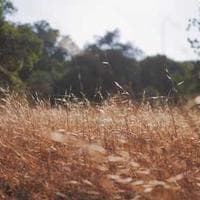-
CNN : NN인데 image에 특화했다.
-
back propagation
-
convnet -> conveolutional layer, relu, pooling layer, fully connected layer
-
image가 가진 특징만 뽑아?
-
trend towards smaller filters and deeper architectures
-
trend towards getting rid of POOL/FC layers
-
conv layer and pool layer
-
set of pixel을 가지고 weight를 준다
-
mpeg, jpeg 압축알고리즘을 보면 화면을 블럭단위로 계산하니까
-
마찬가지로 정한 pixel의 값이 크게 바뀌지 않으니까. 그걸로 optimize하자
-
regular 3-layer Neural network vs ConvNet
-
Convolution Layer
-
image 32x32x3 image, -> 5x5x3 filter
-
convolve the filter with the image
-
3d: width height depth
-
32x32x3 image, 5x5x3 filter w
-
W^Tx _ b
-
activation map: convolve(slide) over all spatial locations
-
number of filter is also hyperparameter
-
stack up activation maps
-
32x32x3 image -> 5x5x3 filter -> 28x28 activation map
-
6 filters produce 6 independet activation map
-
example 7x7 image -> 3x3 filter
-
5x5 output
-
hyper parameter: size of filter, stride,
-
7x7 input, 3x3 filter, 2 stride,
-
if stride 3, won’t fit -> cannot apply 3x3 filter on 7x7 input
-
0 padding ->
-
which filter get?
-
fitler도 learning의 대상, Filter가 Weight값이다.
-
Random initialze하고 back propagation해서 learn한다
-
data preprocessing도 learning한다.
-
example of learning (N-F)/stride + 1
-
w1h1d1 -> F -> w2h2d2
-
fx, sx, px - filter, stride, zeropadding
-
Pooling Layer
- make the presentations smaller and more manageable
- operates over each activation map independently
-
Max pooling
- 4x4 -> 2x2 filter:2 stride:2
- max pooling: get the biggest number
- trend not to use it
- pooling -> only to reduce the computation?
-
small stride first, large stride later
-
Pooling Layer
-
앙상블,
Posted on:December 13, 2016 at 12:00 AM
Deep Learning Study Ch#04

인기글
최신글
태그 클라우드
cpp
svn
python
kubernetes
3d
machine-learning
ruby-on-rails
postgres
webgl
opengl
mfc
mysql
-
trac
docker
dreamhost
database
llm
wipi-c
gdc
php
subversion
hlsl
shader
mac
argo
ubuntu
gcp
direnv
prisma
cursor
giga
siggraph
webvr
cg
glsl
syntax-highlight
visual-studio
cgfx
nlp
unity3d
maya
ui
react
ansible
parquet
dotenv
redis
helm
api
pulumi
nextjs
sk-telecom
unity
mobile
jquery
high-performance-computing
digital-content-creation
google-maps
rabbitmq
snowflake
data-engineering
big-data
reactjs